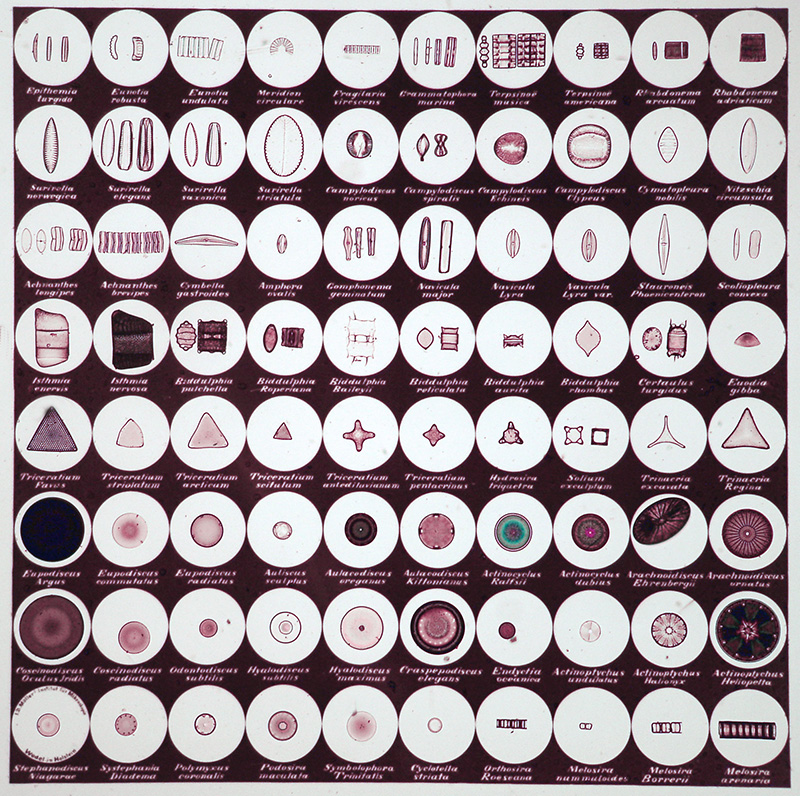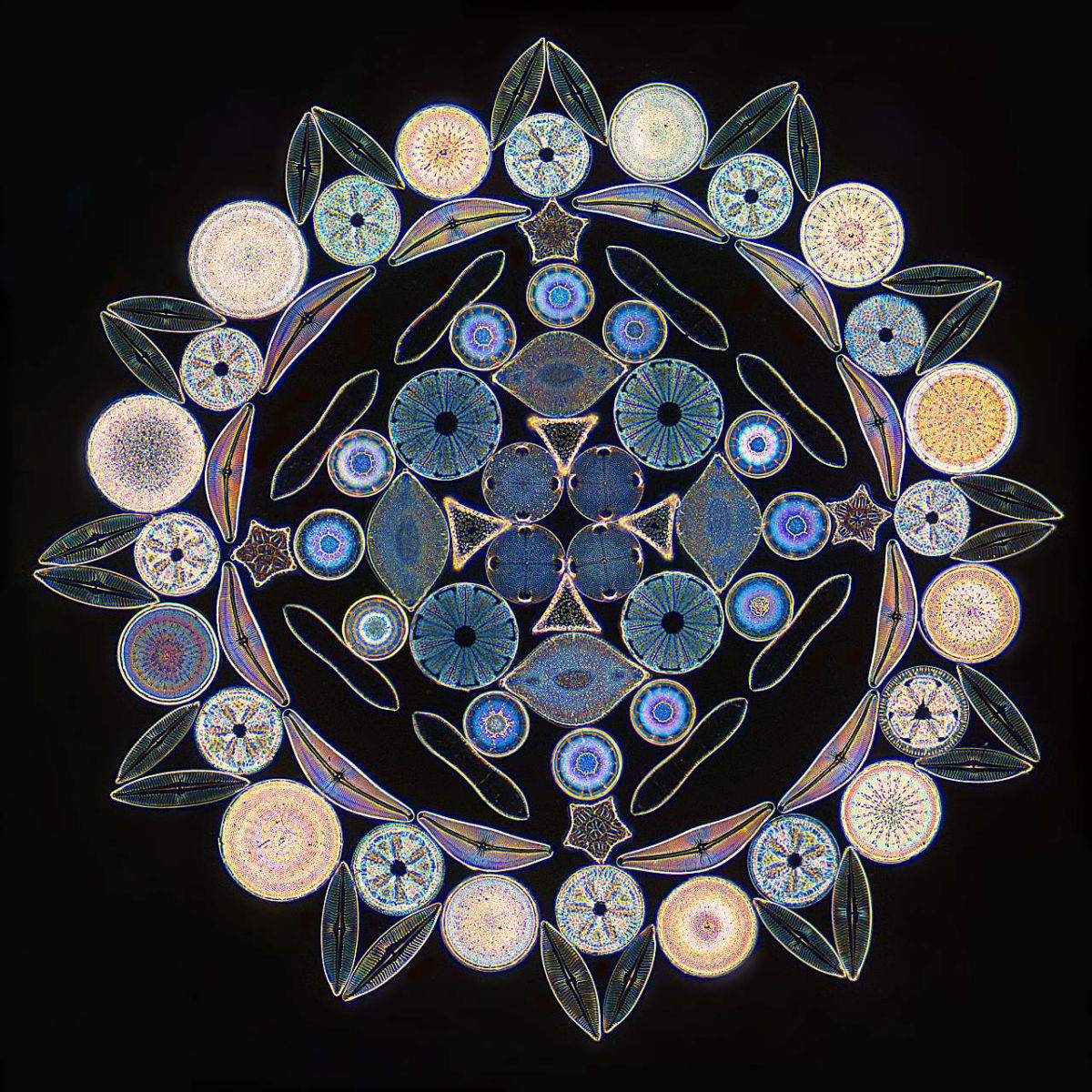Klaus Kemp, is a self-taught master of the Victorian art of diatom arrangement. After his first exposure to the intricate patterns of algae by the German microscopist J.D. Möller (1844 – 1907) he was completely hooked.
Diatoms are single celled algae. They are the most common form of phytoplanktons and form the base of the aquatic food chains. They represent the earliest plant lineage long before land plants evolved at about 700 million years ago. Their cell walls are made up of silica forming a glass cage with enthralling beauty.
In Victorian times using a microscope artists would arrange diatoms into artistic patterns. The lost art has been revived by Klaus Kemp who has devoted his life to rediscover diatom arrangement. He is proclaimed as the only master practitioner of this superb mix of art and science.
The earliest diatom arrangements go back to early 1800s. The art form reached its peak in the latter part of the ninteenth century. Intense interest in the natural world created perfect conditions for the synergistic merge between arts and sciences. Moreover, the Victorian perspective to bring order and rationality to the world found an embodiment in the “algaesque” compositions.
Arrangements were often made by professional microscopists, such as J.D. Möller (1844 – 1907) who has done a marvelous job of producing an identification micrograph for all the major diatom types. Arrangements were sold to wealthy amateur naturalists who would exhibit them at social events.
Klaus collected samples from around the world. He is also in correspondence with many foreign diatom enthusiasts who often provide him with specimens from other countries. There’s always an excitement for encountering new specimens. One particular genus called Mastogloia has captivated him. Klaus’s discoveries include several new diatom species.
Klaus has created a streamlined pipeline for his art. He cleans the diatoms before mounting them on a glass slide using a trade secret adhesive. The adhesive allows Klaus to work under a microscope over many days resulting in impressively intricate arrangements. Then a high refractive index mountant is incorporated. Light is key element for the visualization. Last and final step involves sealing of the project with another glass slide.
Diatoms are ubiquitous. They can be found in any body of water. Puddles, lakes, rivers or the sea are teeming with photosynthetic diatoms. Phytoplanktons can be a force of nature whose effects are visible from space. A phytoplankton Emiliania huxleyi can change the color of the entire sea surfaces such as the Blacksea.




1 Comment
With so much to discover in this great big amazing world, I should never again be bored and depressed with nothing to do. Beautiful and rich in life where ever you find water. What a wonderful discovery. Thank you for sharing this with us.